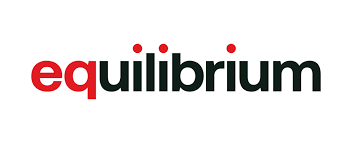What makes your business distinctive?
Equilibrium Investment Management is an advice-led business. As a DFM and multi-manager, we aim to bridge the gap between investments and advice by building portfolios that are aligned with the advisor’s advice processes, ensuring that through our collaborations we get clients to their investment outcomes. Although we have a range of portfolios that reflect our best investment view, we are able to customise portfolios for clients who are looking for different outcomes or who want to be involved in some of the decisions around managers.
Who is your ideal client?
Our clients are both financial advisors and end investors, although our primary relationship is with the advisor. Our solutions differ depending on whether the advisor holds a Category I or Category II licence under the FAIS Act. Category I advisors would use our full discretionary ability to build and manage portfolios that aim to get investors to a particular outcome over a particular time frame. For advisors with a Category II licence, we mainly act in a sub-investment advisory capacity, constructing and managing portfolios according to Category II’s defined investment process.
What role do you believe DFMs play in improving client outcomes?
By aligning the portfolio outcomes or benchmarks to the outcomes that advisors have agreed with their clients, DFMs like ourselves are better able to partner with advisors to get their joint clients to the identified targets, rather than investing in portfolios with a peer group or other arbitrary benchmark that may or may not be aligned to what the client wants to achieve. DFMs offer risk management services, balancing potential drawdowns against outcomes probability, resulting in less volatile portfolios. This is crucial for conservative investors, as it helps clients remain invested through the market cycle, reducing the need for market timing. Equilibrium, as an asset gatherer, leverages preferential pricing from underlying managers, delivering cost savings to clients, which may often lead to superior returns over time.
Some have the view that DFMs should have performance tables like fund managers.
Your perspective?
Advisors don’t only come to a DFM for performance, but also for other practice management benefits. DFMs should be held accountable for performance in the same way that any other asset manager is. DFM performance is difficult to measure in public surveys due to model portfolios and the complexity of managing bespoke solutions for select clients. Clients should compare potential DFMs for investment skills and desired outcomes. Independent providers are conducting surveys to make it easier to compare DFMs, despite the DFM industry being relatively new. However, potential investors should verify surveys’ credibility, understand portfolio differences and compare actual performance with benchmarks and peer groups.
What are the biggest challenges you see facing DFMs in the next decade?
The South African DFM market is saturated and competitive, with new entrants often discounting fees to attract assets. Larger players with sufficient scale can negotiate better prices and avoid fee pressure, especially during cycles of poor market performance. As the industry matures, differentiation of products is expected, with DFMs offering model portfolios and CIS funds. Consolidation is expected to increase, and product suites may differentiate, with providers focusing on TICs, offering passive and smart-beta solutions and those with a broad skill set branching out into alternatives and offshore portfolios.
The offering for tied agents is likely to have more vertically integrated solutions whereas DFMs who want to continue to attract independent financial advisors as clients, will need to show that they are independent in their manager selection process. The shift towards networks will continue to scale, with DFMs demonstrating good performance and aligning with advice processes growing, while those lacking assets may be absorbed by larger providers.













